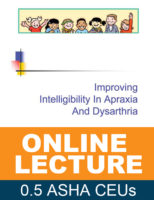Q: My client has an inter-dental lisp, possibly a tongue thrust, a high narrow palate and an anterior open bite. He also has difficulty with /r/ in all positions. I only saw him one time and do not want to waste time in therapy. Should I send him to the orthodontist before beginning therapy? Is there anything I can do in terms of exercises to help him? This client represents most of what I call the 5-Part Problem: An anterior…
Classic 5-Part Problem (anterior open bite, high arch palate, reverse swallow pattern, frontal lisp, an oral habit like sucking)
By Pam Marshalla


